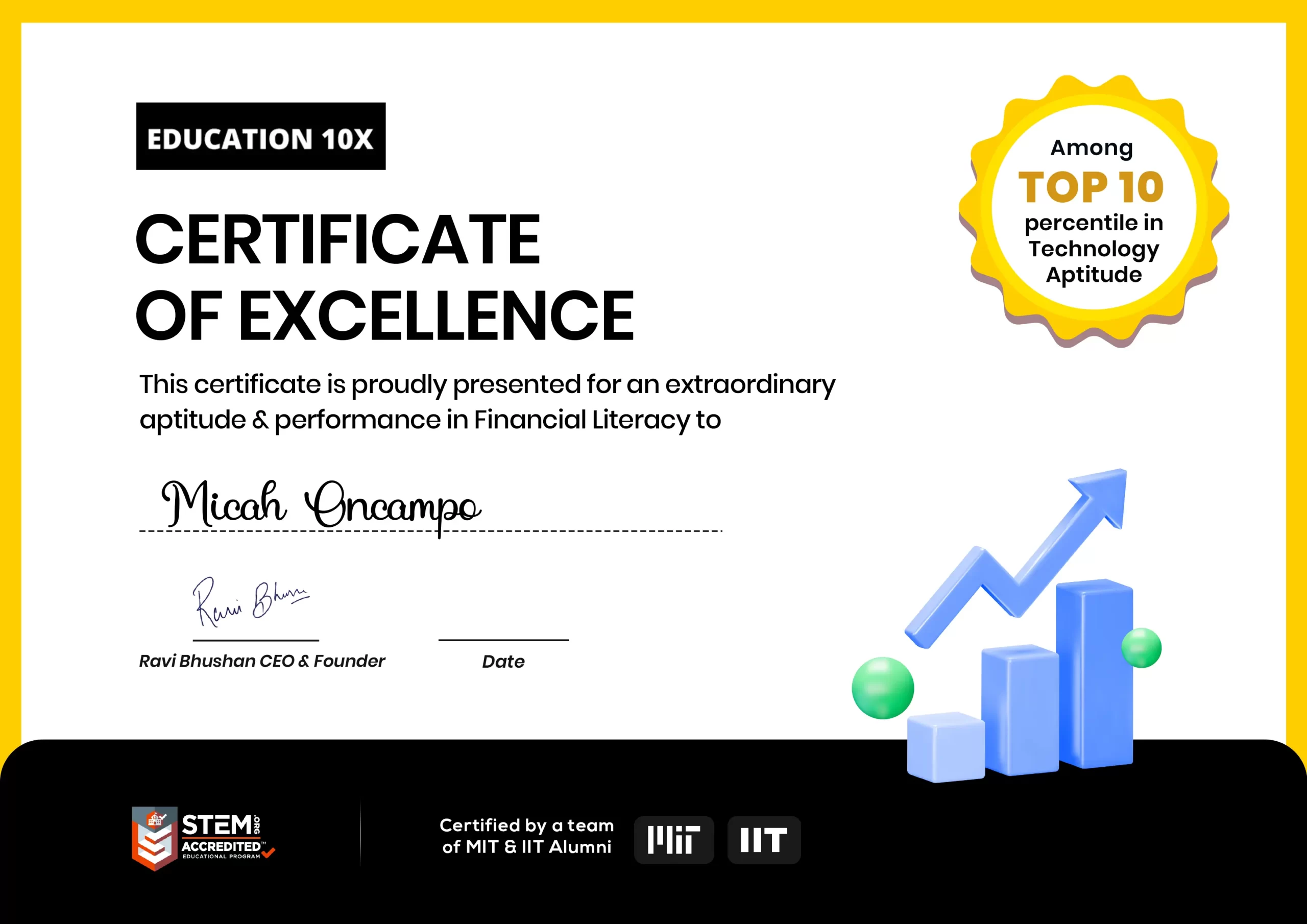Introducing “Money Matters: A Practical Guide for Teaching Kids About Money”! This invaluable resource is designed to equip parents, educators, and guardians with essential tools and strategies to educate children about the importance of money management.
Discover practical tips and engaging activities that will empower young minds to make wise financial decisions, fostering a lifelong foundation of financial literacy. Join us on this transformative journey as we prepare the next generation for a prosperous future.
Table of contents
- Introduction to Teaching Kids About Money
- Benefits of teaching kids about money management:
- Start Early: Money Concepts for Young Children
- Setting Goals: Budgeting and Saving for Older Children
- Teaching Kids About Money: Allowances and Chores
- Introduction to Allowances
- Introducing Chores
- Money and Technology: Online Banking and Digital Wallets
- Advantages of Using Technology for Managing Money:
- Risks Associated with Using Technology for Managing Money:
- Spending Wisely: Teaching Kids About Needs vs. Wants
- Money and Entrepreneurship: Encouraging a Growth Mindset
- Conclusion
- Frequently Asked Questions
Introduction to Teaching Kids About Money
In today’s fast-paced and increasingly complex world, teaching kids about money management has become more crucial than ever before. The ability to understand and handle money wisely is a fundamental life skill that empowers children to make informed financial decisions throughout their lives.
By instilling sound financial principles from an early age, parents and educators can equip children with the tools they need to navigate the intricate financial landscape and achieve long-term financial well-being.
This introduction will delve into the importance of teaching about money lessons for kids and how it can benefit them in the long run, setting them up for a lifetime of financial success and independence.
Benefits of teaching kids about money management:
Financial independence:
We provide kids with the skills they need to become financially independent by teaching them about money management. They acquire the knowledge necessary to earn, save, budget, and spend money responsibly, empowering them to face financial issues with assurance.
Developing responsible spending habits:
Children who are taught the value of money at a young age tend to behave more responsibly. They develop the ability to distinguish between necessities and wants, set spending priorities, and consciously choose how to manage their finances.
Building strong saving habits:
Encouraging children to save from an early age is one of the benefits of teaching them about money management for kids. They discover the value of making budgets, setting financial goals, and consistently saving money. This behavior can set them up for a future of financial security, enabling them to deal with unforeseen costs and realize their long-term goals.
Making wise financial decisions:
Children who are financially literate are better able to manage their money. They gain knowledge of ideas like interest rates, investments, and credit, which enables them to weigh risks, appraise possibilities, and make informed decisions. When they are adults and must make more difficult financial decisions, they can tremendously benefit from these abilities.
Avoiding debt and financial traps:
Teaching children about money management gives them the skills necessary to steer clear of debt and financial traps. They become aware of the repercussions of excessive borrowing, spending, and living beyond their means. They can make prudent decisions that safeguard their financial security by being aware of these threats.

Start Early: Money Concepts for Young Children
Teaching children about money from an early age is crucial for their financial literacy for kids and responsible money management skills in the future. By introducing simple money concepts to young children, we can lay a strong foundation for their understanding of earning, saving, and spending wisely.
In this blog section, we will explore some basic money concepts that parents and educators can teach young children in a fun and engaging way.
Identifying Coins and Bills:
Start by introducing kids to the various coin and bill varieties. Show them different denominations and describe their meanings. By having children sort and identify coins or match the values to related images, you can make a game out of it. They will become more accustomed to seeing money in its physical form thanks to this practice.
Earning Money:
Children should be taught that earning money involves working or completing tasks. Encourage children to take on age-appropriate domestic duties like cleaning their room or assisting with basic chores. Children will learn the value of money and the effort needed to achieve it by connecting work and earning.
Saving Money:
Introduce the idea of saving by pointing out that funds can be stored aside for future use, instilling good habits for kids. Give them a piggy bank or a transparent jar to collect their spare change, and encourage them to save aside some of whatever money they get in the form of presents or an allowance. Together, set objectives, such as saving for a toy or a special treat, and rejoice in their accomplishments as they see their funds increase.
Planning and Budgeting:
Introduce the idea of budgeting to youngsters as they get older. Create a straightforward budget with them to demonstrate how to distribute funds for various needs. For instance, divide their allocation into sections for savings, expenditures, and charitable contributions. Children who budget and keep track of their expenses will learn wise financial practices.
Comparing Prices:
Emphasize to kids the value of doing so before making a purchase. Show them how to compare costs for the same item, and then explain how doing so will help them get the best deal possible. Encourage students to exercise critical thought and weigh several aspects of a decision, such as quality, price, and durability.
If you desire further information about kids coding languages. Click here!
Giving and Sharing:
Encourage kids to donate a portion of their earnings to the charity or cause of their choice to instill in them the value of giving and sharing. Describe how giving to others is a worthwhile way to spend money and have an impact on the neighborhood. Encourage empathy and a sense of social responsibility in them by assisting them in studying and comprehending the organizations they wish to support.

Setting Goals: Budgeting and Saving for Older Children
As children grow older, it becomes essential to teach them the importance of budgeting and saving money. These valuable skills will not only benefit them in the present but also set them up for financial success in the future.
By introducing budgeting basics and encouraging saving habits early on, parents can empower their older children and teenagers to become financially responsible individuals, all while incorporating mindfulness activities for kids to make the learning experience well-rounded. In this blog section, we will explore effective strategies to help parents guide their children toward developing strong budgeting skills and fostering a habit of saving.
Start with the Basics:
Introduce the basic ideas of budgeting and money management to start. Describe the idea of revenue and expenses, putting a focus on the necessity to allocate funds appropriately. Encourage older kids and teenagers to make a straightforward budget that lists their usual expenses (such as school supplies, entertainment, and personal care products) and sources of money (like an allowance or profits from a part-time job).
Track Spending:
Instruct older kids and teenagers on the advantages of doing this. Encourage them to track their expenses, whether they do so with a physical journal, a spreadsheet, or a budgeting app. They can learn where their money is going and find areas where they can save money or make wiser decisions by regularly analyzing their spending.
Differentiate Between desires and Needs:
Making the distinction between desires and needs is an important lesson to teach. Ask your youngster questions like, “Is this item a necessity or a desire?” to help them critically consider their purchases. They will be able to make wise decisions and curb their impulse buying thanks to this practice.
Spend Later; Save Initially:
Encourage saving by hammering home the idea of “paying themselves first.” Encourage your child to save money first before using it for other expenses by encouraging them to set aside some of their income. This strategy fosters an attitude of saving and places a priority on long-term financial security.
Introduce Savings Accounts and Banking:
Take advantage of this chance to introduce your youngster to the world of banking and teaching kids about money. Open a savings account in their name and walk them through the concept of interest. Show students how to keep track of their account balance, create financial objectives, and make consistent deposits. They will gain a realistic grasp of financial institutions and the advantages of conserving money thanks to this first-hand experience.
Set a good example:
The best way for kids to learn is by seeing what their parents do. Set a good example by practicing sound money management yourself. Discuss honestly your spending and saving priorities, savings objectives, and budgeting techniques. You may teach your child the value of making wise financial decisions by emulating these actions.

Teaching Kids About Money: Allowances and Chores
As parents, one of our most important responsibilities is to teach our children valuable life skills. Among these, understanding money management and developing a healthy relationship with finances is crucial for their future success.
When it comes to teaching kids about money, two effective tools at our disposal are allowances and chores. In this blog section, we will explore the significant role that allowances and chores play in imparting financial literacy to children.
FinCHAMPS by BrightCHAMPS is a platform where Financial Literacy courses are offered that equips your child with new-age finance skills through our scientifically designed curriculum that deploys the right mix of academics, games, and activities to inculcate healthy financial habits in kids.
Introduction to Allowances
Children can learn the fundamentals of managing money with the help of allowances. We may teach our children important lessons about budgeting, saving, spending, and even altruism by giving them a consistent sum of money, frequently on a weekly or monthly basis.
a) Budgeting:
By receiving an allowance, kids can learn how to divide their money among several uses. To help children understand the value of prioritizing their financial goals, encourage them to divide their allowance into other categories such as saving, spending, and giving.
b) Saving:
Allowances can instill the habit of saving from an early age. Encourage your children to set aside a portion of their allowance for future needs or long-term goals. This will teach them the value of delayed gratification and the power of compound interest.
c) Spending:
Allowing kids to make spending decisions with their own money helps them understand the concept of making choices within a limited budget, teaching kids responsibility. They will learn to differentiate between needs and wants and develop critical thinking skills when making purchasing decisions.
Introducing Chores
Chores provide an excellent opportunity for children to learn the relationship between work, effort, and money. Assigning age-appropriate chores not only teaches them responsibility and the value of hard work but also prepares them for future responsibilities and financial independence.
a) Responsibility:
By assigning chores, children learn that they have a role to play within the family unit. Completing their assigned tasks fosters a sense of responsibility and accountability, which are essential traits for success in any aspect of life.
b) Work Ethic:
Connecting chores with allowances not only helps children understand that money is earned through effort and hard work but also teaches kids patience. This connection instills a strong work ethic and prepares them for the realities of the working world as they grow older, imparting valuable life lessons early on.
c) Financial Independence:
As children become more proficient in completing chores, they can gradually take on additional responsibilities and earn more money. This progression allows them to experience financial independence in a controlled and supportive environment, which lays the groundwork for their future financial decision-making skills.

Money and Technology: Online Banking and Digital Wallets
In today’s increasingly digitized world, managing finances and making transactions has become more convenient than ever, even with bank accounts for kids. With the advent of online banking and digital wallets, individuals can now perform financial tasks with just a few clicks or taps on their smartphones or computers.
In this blog section, we will explore the introduction to online banking and digital wallets, as well as discuss the advantages and risks associated with using technology for managing money.
Online Banking:
Online banking is the term used to describe the digital platform that banks offer their customers so they may access their accounts, complete transactions, and manage their finances online. It offers a wide range of services, including the ability to pay bills, move money between accounts, check account balances, apply for loans, and even invest in different financial products.
The convenience that online banking provides is one of its key benefits. For financial transactions, customers are no longer required to go to a physical bank branch during business hours. As long as users have an internet connection, individuals may execute transactions and access their accounts whenever and wherever they like.
Additionally, online banking offers real-time information on account balances and transaction history, giving users improved visibility and control.
Digital wallets:
A digital wallet, sometimes referred to as an e-wallet or a mobile wallet, is a platform that enables users to securely store their payment information and conduct transactions online using their smartphones or other mobile devices. Digital wallets offer a centralized and practical method of making payments by storing credit card data, bank account information, and even cryptocurrency.
When compared to conventional payment methods, digital wallets have a number of benefits. They make transactions quicker and more secure by eliminating the need to carry physical currency or credit cards.
Digital wallets reduce the risk of loss or fraud associated with traditional cards by enabling users to make payments by merely tapping their cell phones or scanning a QR code. Additionally, many digital wallets provide extra features like loyalty points, discounts, and incentive programs.
Click robotics classes for kids near me to find out the best classes for your kids.
Advantages of Using Technology for Managing Money:
1. Convenience:
Online banking and digital wallets provide unparalleled convenience. Users can access their accounts and make transactions at any time, eliminating the need for physical visits to banks or carrying bulky wallets.
2. Speed and Efficiency:
Technology allows for near-instantaneous transactions. Payments can be made quickly, bills can be paid with a few clicks, and transfers between accounts can be completed within seconds.
3. Access to Information:
Online banking provides real-time updates on account balances and transaction history, empowering individuals to keep track of their finances more effectively. Digital wallets also offer transaction records, making it easier to review past payments and track expenses.
4. Enhanced Security:
While there are risks associated with using technology for managing money, online banking, and digital wallets often implement robust security measures. These may include encryption, multi-factor authentication, and biometric verification, reducing the risk of unauthorized access and fraud.
Risks Associated with Using Technology for Managing Money:
1. Security Threats:
Despite the security measures implemented by online banking and digital wallets, there is always a risk of data breaches, hacking attempts, or phishing attacks. Users must be vigilant in protecting their personal information and employ strong passwords and security practices.
2. Identity Theft:
If sensitive information falls into the wrong hands, it can lead to identity theft. Hackers may use stolen data to make unauthorized transactions or engage in fraudulent activities, causing financial loss and potential damage to credit scores.
3. Technical Issues:
Technology is not infallible, and technical glitches or system failures can occur. These issues may disrupt access to online banking services or cause delays in transactions, impacting users’ ability to manage their finances effectively.
4. Identity Theft:
If sensitive information falls into the wrong hands, it can lead to identity theft. Hackers may use stolen data to make unauthorized transactions or engage in fraudulent activities, causing financial loss and potential damage to credit scores.
5. Technical Issues:
Technology is not infallible, and technical glitches or system failures can occur. These issues may disrupt access to online banking services or cause delays in transactions, impacting users’ ability to manage their finances effectively.

Spending Wisely: Teaching Kids About Needs vs. Wants
One of the fundamental lessons in money management is understanding the difference between needs and wants. By teaching kids about needs versus wants, we can help them develop a sense of responsibility and make informed choices when it comes to spending their money. Let’s explore this essential concept and how we can impart this knowledge to our children.
Needs are the basic necessities of life, the things we require to survive and thrive. They include food, shelter, clothing, healthcare, and education. Wants, on the other hand, are the things we desire but are not essential for our well-being. They are the extras, the luxuries, and the non-essential items that bring us pleasure or convenience.
Understanding the distinction between needs and wants is crucial because it encourages children to prioritize their spending and make sensible financial decisions. Here are some practical ways to teach kids about this concept:
Open Communication:
Begin by talking to your kids about money in frank and age-appropriate ways. Tell them the difference between wants and needs and why it’s important to make this distinction. Encourage conversation and questions to make sure they thoroughly understand the idea.
Basic Needs:
Help youngsters recognize and comprehend their basic needs. Talk about the value of clothing, shelter, food, and water. Explain that these should always take precedence over wishes since they are necessary for survival.
Differentiate Wants:
Encourage youngsters to recognize their wants by differentiating them. Instruct them to build a list of things they want but may not actually need. This can include games, technology, or leisure pursuits. Children learn to distinguish between needs and want by making this distinction, which helps them become more conscious of their own desires.
Budgeting Lessons:
Introduce the concept of budgeting and saving money, an important aspect of budgeting for kids. Establishing financial goals can help teach kids how to use their resources effectively. Help them realize that by putting needs before wants, they can save money for upcoming endeavors or unforeseen costs.
Delayed Gratification:
Children should be taught the importance of delayed gratification. Explain that while it’s fine to have certain wants, it’s also critical to take into account their financial status and determine whether making the purchase will advance their priorities. Encourage them to put off purchases until they have the money to make them instead of making impulsive ones.
Critical Thinking:
Exercises for critical thinking should be given to kids that contrast needs and wants. Ask them to decide whether a specific item is a need or a want after presenting them with many possibilities. This improves their capacity for decision-making and helps them build their analytical skills.
Setting an example:
Be a good example. In your own life, demonstrate to your kids how you distinguish between needs and wants. Make wise spending decisions to display sound financial behavior. The way that kids learn best is frequently by seeing what their parents and other adults do.
Money and Entrepreneurship: Encouraging a Growth Mindset
In today’s rapidly evolving world, the importance of instilling a growth mindset, critical thinking skills for kids, and financial literacy in children cannot be overstated. One effective way to cultivate these essential life skills is through entrepreneurship.
Encouraging children to explore entrepreneurial endeavors not only empowers them to think creatively and take calculated risks but also provides invaluable lessons in money management. In this blog section, we will delve into how entrepreneurship can play a pivotal role in nurturing a growth mindset and fostering critical thinking skills and money management skills in children.
Developing a Growth Mindset:
To succeed as an entrepreneur, one must be willing to take on new challenges, persevere through setbacks, and have a growth mindset. By encouraging kids to start their own businesses, we give them a chance to hone important skills like adaptation, resilience, and problem-solving.
Children learn that failure is not a barrier but rather a chance for growth when they experience the ups and downs of starting and operating a business. This mentality change gives kids the confidence to take on difficulties, approach issues with a positive outlook, and develop self-belief in their capacity to learn and grow.
Cultivating Creativity and Innovation:
Children are inspired to be creative and to think outside the box by entrepreneurship. Children gain a sense of purpose and passion when they are free to explore their hobbies and translate their concepts into real goods or services.
Children develop an inventive thinking process and a spirit of discovery through brainstorming, prototyping, and fine-tuning their entrepreneurial endeavors. These abilities extend beyond the sphere of business, enabling kids to approach numerous facets of their lives with an open mind and a new viewpoint.
Learning Financial Literacy:
Every youngster should learn how to manage their money, and entrepreneurship provides a great platform for this to happen, fostering finance for kids. Young business owners learn the value of planning, saving, and making wise financial decisions by running their own businesses.
They acquire first-hand knowledge of creating budgets, keeping track of costs, and appreciating the worth of money. Moreover, pupils gain a practical understanding of economic principles as they study ideas like profit, loss, revenue, and investment. These financial literacy skills firmly establish their future financial security.
Building Confidence and Leadership:
Children who are given the opportunity to pursue their own ideas and projects are better able to develop their confidence and leadership abilities. They gain the ability to autonomously make judgments, negotiate with partners or clients, and communicate effectively as young entrepreneurs.
These encounters help children develop into self-assured people who are able to take calculated risks, accept responsibility, and guide others. Children can benefit from these leadership skills acquired through entrepreneurship in various facets of their lives, from school projects to potential future careers.
Encouraging Collaboration and Networking:
Entrepreneurship frequently entails teamwork and networking, providing valuable opportunities for children to meet like-minded people, mentors, and subject-matter experts, all while learning good manners for kids. Children gain an understanding of the value of cooperation, clear communication, and utilizing the individual abilities of each team member through working with others, preparing them not only for business but also for life’s many collaborative ventures.
Through networking, they are exposed to various viewpoints and given access to fresh possibilities. Entrepreneurs acquire social skills that are essential for success in both the personal and professional domains.
Conclusion
In conclusion, teaching kids about money management is an essential and valuable life skill that sets them up for a financially secure future. By imparting financial literacy from a young age, we empower children to make informed decisions about their finances, develop responsible spending habits, and cultivate a mindset of saving and investing.
Through early education on money management, children learn the fundamental concepts of budgeting, saving, and distinguishing between needs and wants. They grasp the importance of setting financial goals and understanding the concept of delayed gratification which equips them with the necessary tools to make sound financial decisions as they grow older.
Furthermore, teaching kids about money management encourages a sense of responsibility and accountability. They learn to make trade-offs and prioritize their spending, making them less likely to fall into debt or face financial hardships in the future. They also gain an appreciation for the value of money and the effort required to earn it, fostering a sense of gratitude and humility.
In addition to personal benefits, teaching kids about money management also contributes to society. Financially literate individuals are less likely to rely on public assistance programs and are more inclined to make positive contributions to the economy. They have a higher likelihood of achieving financial independence, which reduces the burden on social welfare systems and promotes overall economic stability.
In conclusion, teaching kids about money management is a crucial aspect of their education and development. By equipping them with the necessary skills and knowledge, we empower them to navigate the complex world of finance, make informed decisions, and achieve financial security. Investing in their financial education today will yield lifelong benefits and contribute to a financially responsible and prosperous society.
Frequently Asked Questions
Start by introducing basic concepts like saving, budgeting, and the value of money. Encourage them to set financial goals and make wise spending decisions. Lead by example and involve them in age-appropriate financial activities.
Kids can start learning about money as early as preschool age. Introduce them to coins, counting, and basic money concepts. As they grow, gradually teach them about more complex financial topics.
Involve your 10-year-old in discussions about family finances. Teach them about earning money through chores or small jobs. Encourage saving and decision-making by giving them a small allowance and guiding their spending choices.
The age at which children become financially independent can vary. It largely depends on individual circumstances and cultural norms. However, it’s generally expected for children to become financially independent in their late teens or early twenties.
Yes, parents play a crucial role in teaching kids about money. By imparting financial knowledge and skills, parents help their children develop a strong foundation for future financial success.
The amount of money a 10-year-old should have varies. It depends on factors such as family financial situation, cultural practices, and individual circumstances. However, a modest allowance or savings of a few dollars per week can be a good starting point.
Encourage saving habits, help your child set financial goals, and teach them about budgeting and spending wisely. Introduce them to basic concepts like investments and long-term planning. Support their financial education and provide guidance along the way.


 We are an army of educators and passionate learners from BrightChamps family, committed to providing free learning resources to kids, parents & students.
We are an army of educators and passionate learners from BrightChamps family, committed to providing free learning resources to kids, parents & students.








